Imagine stepping into your kitchen and plucking fresh basil or mint for your favorite dish, all harvested from a garden you cultivated yourself. Whether you’re a beginner ready to dip your toes into the soil or a seasoned gardener looking to expand your green thumb repertoire, creating a DIY herb garden is a rewarding endeavor that brings the flavors of nature right to your doorstep.
Herb gardens are more than just a collection of plants; they are a gateway to sustainable living and culinary creativity. By nurturing an herb garden, you’ll not only enhance your meals but also gain a deeper appreciation for the cycles of growth and the satisfaction of cultivating your own food.
In this article, you’ll discover practical tips and creative ideas to design a thriving herb garden, regardless of the space you have available. From choosing the right herbs to understanding their care requirements and innovative planting techniques, we’ll guide you through each step with clarity and enthusiasm.
Select the Perfect Herb Varieties
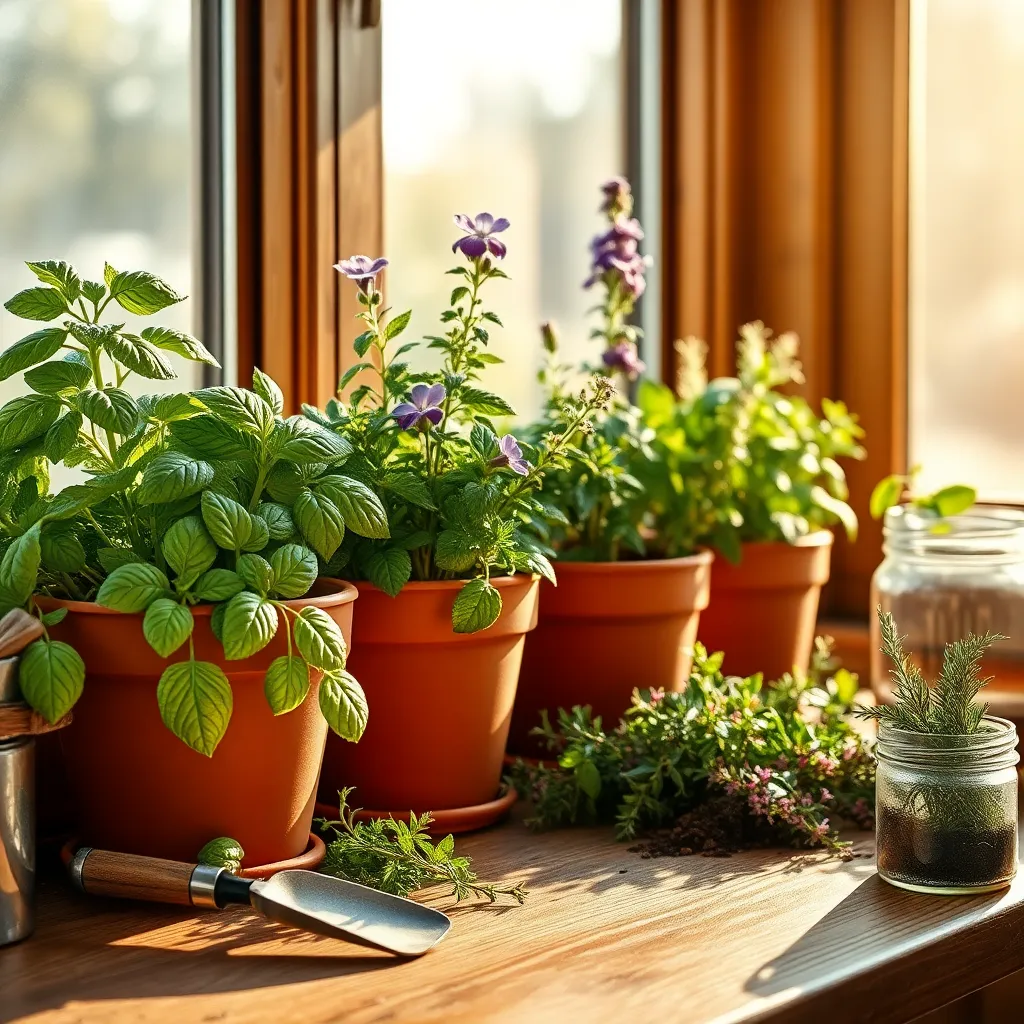
Choosing the right herb varieties is essential for a thriving DIY herb garden. Consider the sunlight availability and space in your garden when selecting herbs, as different types have varying light and space needs.
If you’re a beginner, start with hardy herbs like basil, rosemary, and thyme, which are relatively easy to grow. These herbs generally thrive in well-drained soil and require regular watering, but be careful not to overwater, as this can lead to root rot.
For gardeners with more experience, experimenting with less common herbs like lemon balm or tarragon can be rewarding. These herbs not only add unique flavors to your dishes but also require slightly different care; for example, tarragon prefers slightly dryer soil conditions.
When planting, remember that most herbs prefer a sunny spot, ideally getting six to eight hours of sunlight daily. However, some herbs like mint can tolerate partial shade, making them versatile options for areas with less sun.
- Soil Type: Most herbs thrive in well-draining soil; consider adding sand or perlite to improve drainage.
- Watering Schedule: Water herbs in the morning to allow the soil to dry out during the day, reducing the risk of disease.
- Spacing: Ensure adequate spacing between plants to allow air circulation, which helps prevent mold and mildew.
Gather Essential Gardening Supplies
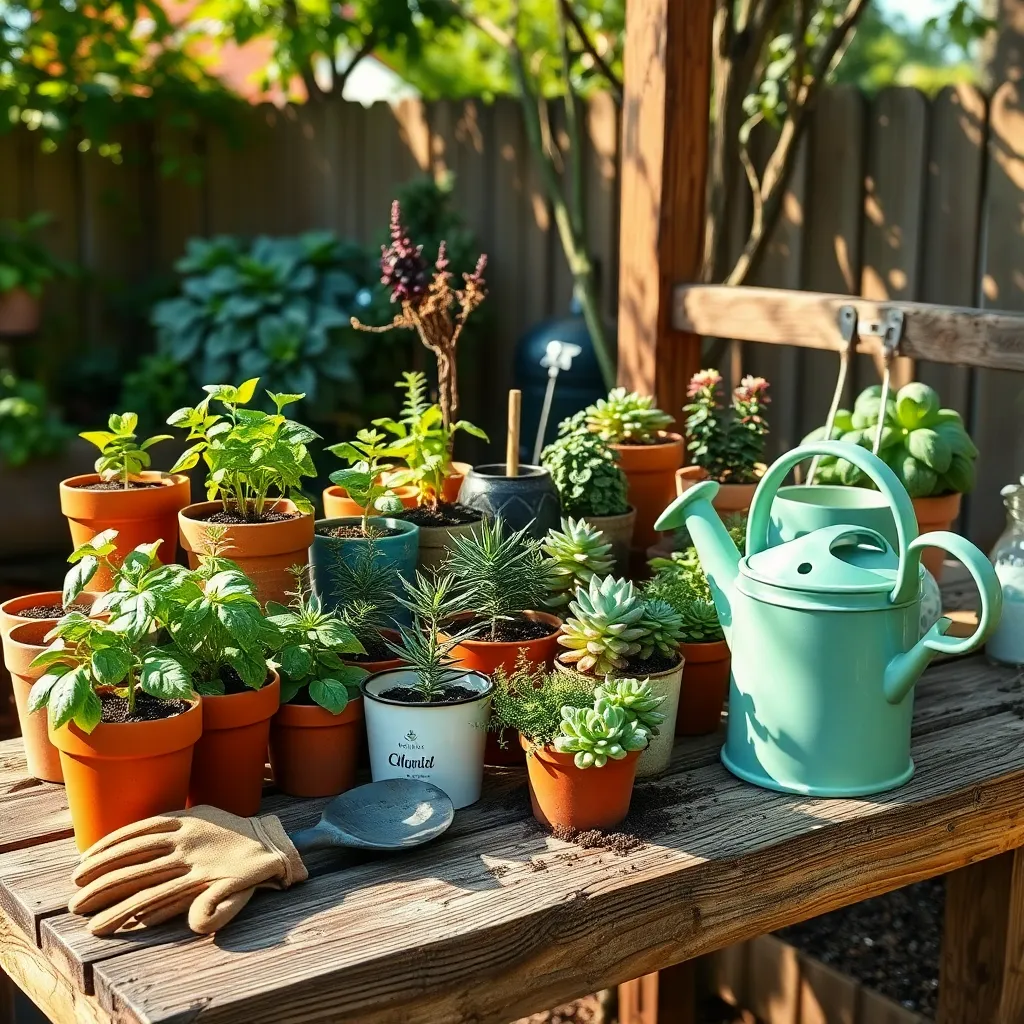
Before planting your herb garden, it’s crucial to gather the right tools and materials. Having the proper supplies will make the gardening process smoother and more enjoyable, especially for beginners.
Start with a good pair of gardening gloves to protect your hands from dirt and thorns. Choose gloves that are durable yet flexible enough to allow you to handle delicate herb plants with ease.
Next, invest in a quality trowel for planting and transplanting your herbs. Look for a trowel with a comfortable grip and a sturdy blade that can easily cut through soil.
A watering can with a gentle shower head is essential to avoid damaging young plants. This ensures that the soil is evenly moistened without washing away seeds or disturbing plant roots.
Consider purchasing a set of small gardening shears for trimming and harvesting your herbs. Sharp, precise blades will help you maintain the health and appearance of your plants.
Don’t forget about soil, which is the foundation of your herb garden. Use a well-draining potting mix that is rich in organic matter to provide the best growing conditions for your herbs.
For those growing herbs indoors, consider using pots with drainage holes to prevent waterlogging. Ensure they are placed in a sunny spot where the herbs can receive at least six hours of light per day.
More experienced gardeners might want to experiment with a pH meter to monitor soil acidity levels. This can help in fine-tuning the growing conditions for more sensitive herb varieties.
By equipping yourself with these essential gardening supplies, you set the stage for a thriving DIY herb garden. With the right tools and materials at hand, you’ll be more prepared to nurture your plants successfully.
Prepare a Suitable Planting Container
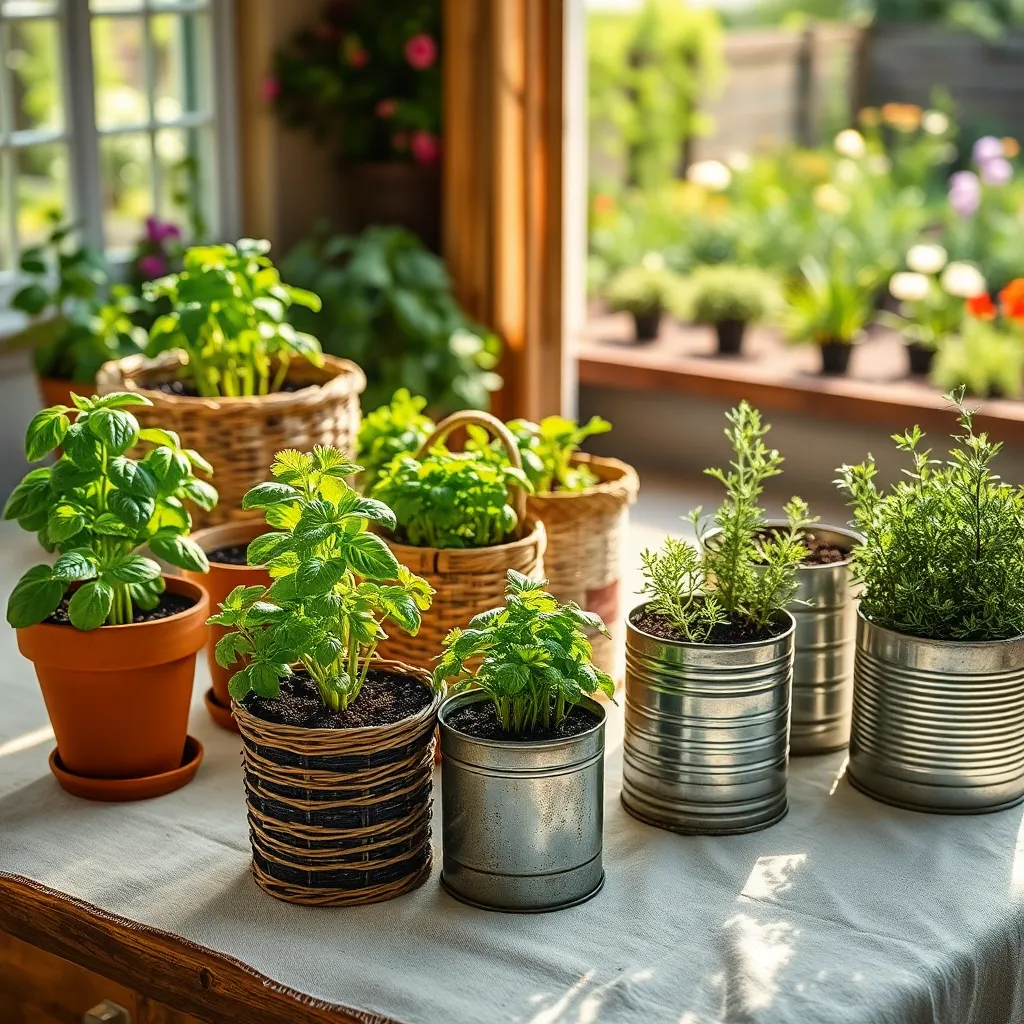
Choosing the right container for your herb garden is crucial for healthy plant growth. Opt for containers that have adequate drainage holes to prevent waterlogging, which can lead to root rot.
Consider the size of the container based on the herbs you plan to grow. Smaller herbs like basil and cilantro thrive in pots that are at least 6 inches deep, while larger herbs such as rosemary might require deeper containers.
When selecting a material for your container, keep in mind that each has its pros and cons. Terracotta pots are classic and breathable, aiding in soil aeration, but they dry out quickly and may require more frequent watering.
Plastic containers are lightweight and retain moisture better, which can be ideal for herbs that prefer consistent soil moisture. However, they may not offer the same level of breathability as terracotta.
For an advanced tip, consider using self-watering containers that help maintain consistent moisture levels. These are particularly useful if you live in a dry climate or have a busy schedule that makes regular watering challenging.
Plant Herbs with Proper Spacing
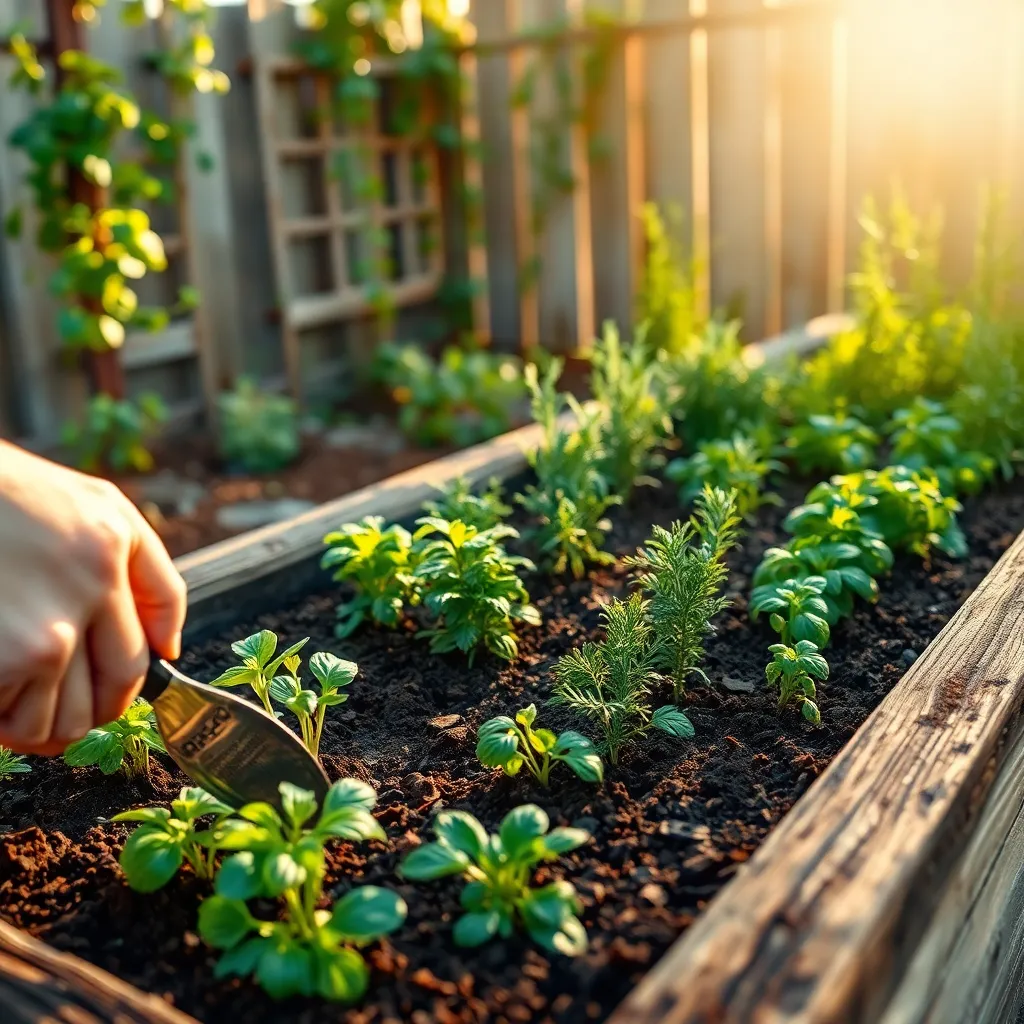
When planting herbs, it’s crucial to consider the proper spacing to ensure each plant receives adequate light, nutrients, and air circulation. Overcrowding can lead to poor growth and an increased risk of disease, so give your herbs room to thrive.
Start by identifying the mature size of each herb, as this will guide your spacing requirements. For example, basil and parsley can be spaced about 12 inches apart, while larger herbs like rosemary require up to 24 inches.
Consider using a grid system if you’re planting in a container to make sure each herb has its own designated space. This method not only promotes healthy growth but also makes it easier to manage and access your herbs as they mature.
Incorporating companion planting can further enhance your herb garden’s success. Pairing herbs like cilantro and dill can improve growth while deterring pests, thanks to their complementary growing patterns.
Pay attention to the soil quality and type, as this will impact spacing needs. Herbs like thyme and sage prefer well-draining soil; adding sand or perlite can improve drainage and prevent root rot in crowded conditions.
Watering frequency will also vary depending on your spacing and soil choice. Ensure that each plant receives adequate moisture without oversaturating the container, as this can lead to fungal issues.
Maintain and Harvest Regularly
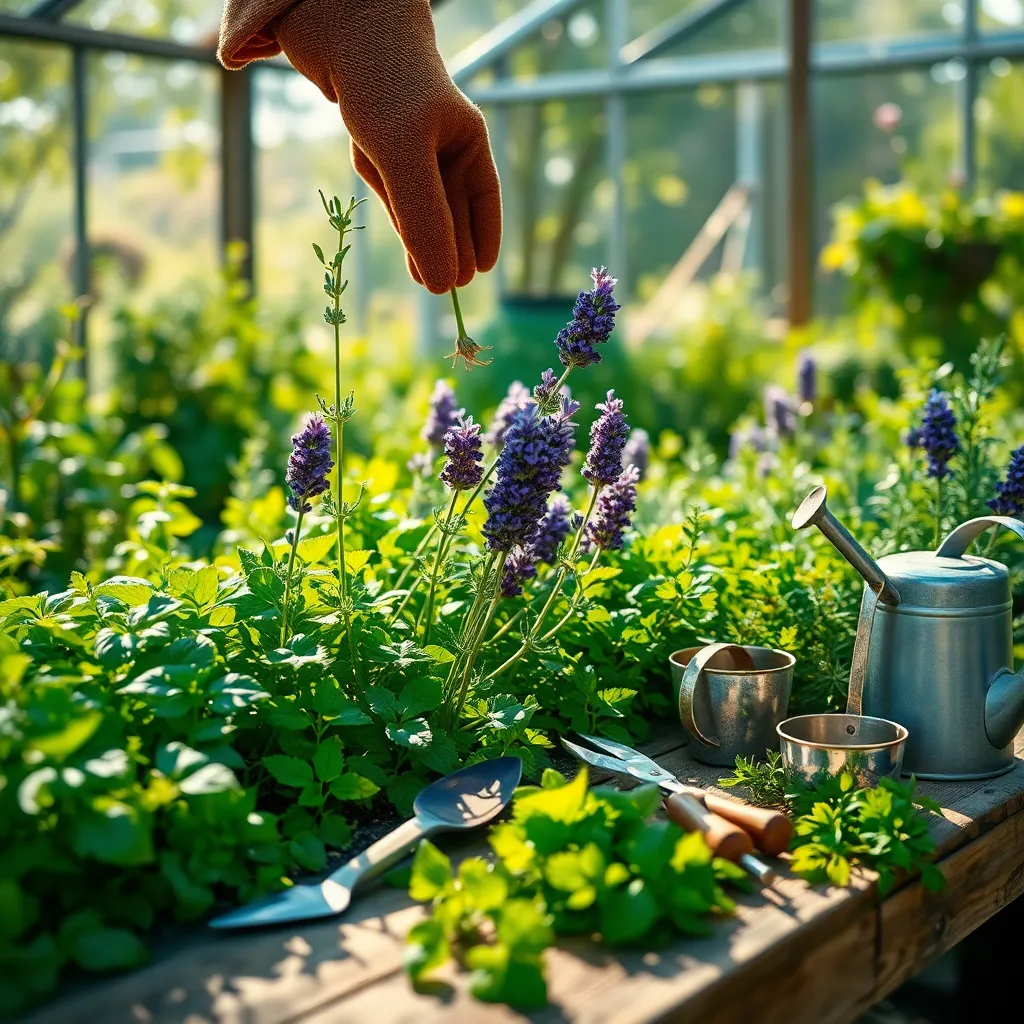
To keep your herb garden thriving, it’s essential to maintain and harvest regularly. Start by checking your plants weekly for any signs of pests or diseases, as early detection can prevent larger issues later.
Watering is another crucial aspect of maintenance. Most herbs prefer well-draining soil and need watering when the top inch feels dry, typically once or twice a week depending on your climate.
Pruning is an excellent way to encourage new growth and prevent your plants from becoming leggy. Use sharp scissors or pruning shears to trim back about one-third of the plant, focusing on dead or overcrowded areas.
Harvesting herbs not only provides fresh ingredients for your kitchen but also promotes healthier plant growth. Pick leaves in the morning after the dew has dried but before the sun is too hot to ensure maximum flavor intensity.
For some herbs like basil and mint, it’s best to harvest just above a leaf pair to encourage bushier plants. Meanwhile, rosemary and thyme benefit from having their stems cut back, which can enhance their woody structure and stimulate new shoots.
Regular maintenance ensures your herbs stay productive and robust. By integrating these practices into your routine, you’ll enjoy a bountiful supply of fresh herbs throughout the growing season.
Conclusion: Growing Success with These Plants
As we’ve explored in ‘How to Make a DIY Herb Garden’, building a flourishing relationship is much like nurturing a vibrant garden. First, setting a strong foundation with quality soil mirrors the importance of trust. Second, selecting a variety of herbs highlights the need for diversity and shared interests. Third, giving your garden proper sunlight and water emphasizes consistent communication and attention. Fourth, regular pruning reflects the necessity of resolving conflicts and maintaining balance. Lastly, enjoying the harvest together embodies celebrating shared achievements and growth.
Now, take a moment to discuss with your partner which “herbs” you want to cultivate in your relationship—whether that’s more quality time or new shared hobbies. This small step can significantly strengthen your bond.
Don’t forget to bookmark this article! It’s a resource you’ll want to revisit as you continue nurturing your relationship. Together, let’s plant the seeds of understanding and watch your relationship flourish. Remember, with intentional care and attention, your relationship can grow more resilient and rewarding, setting the stage for lasting success.

